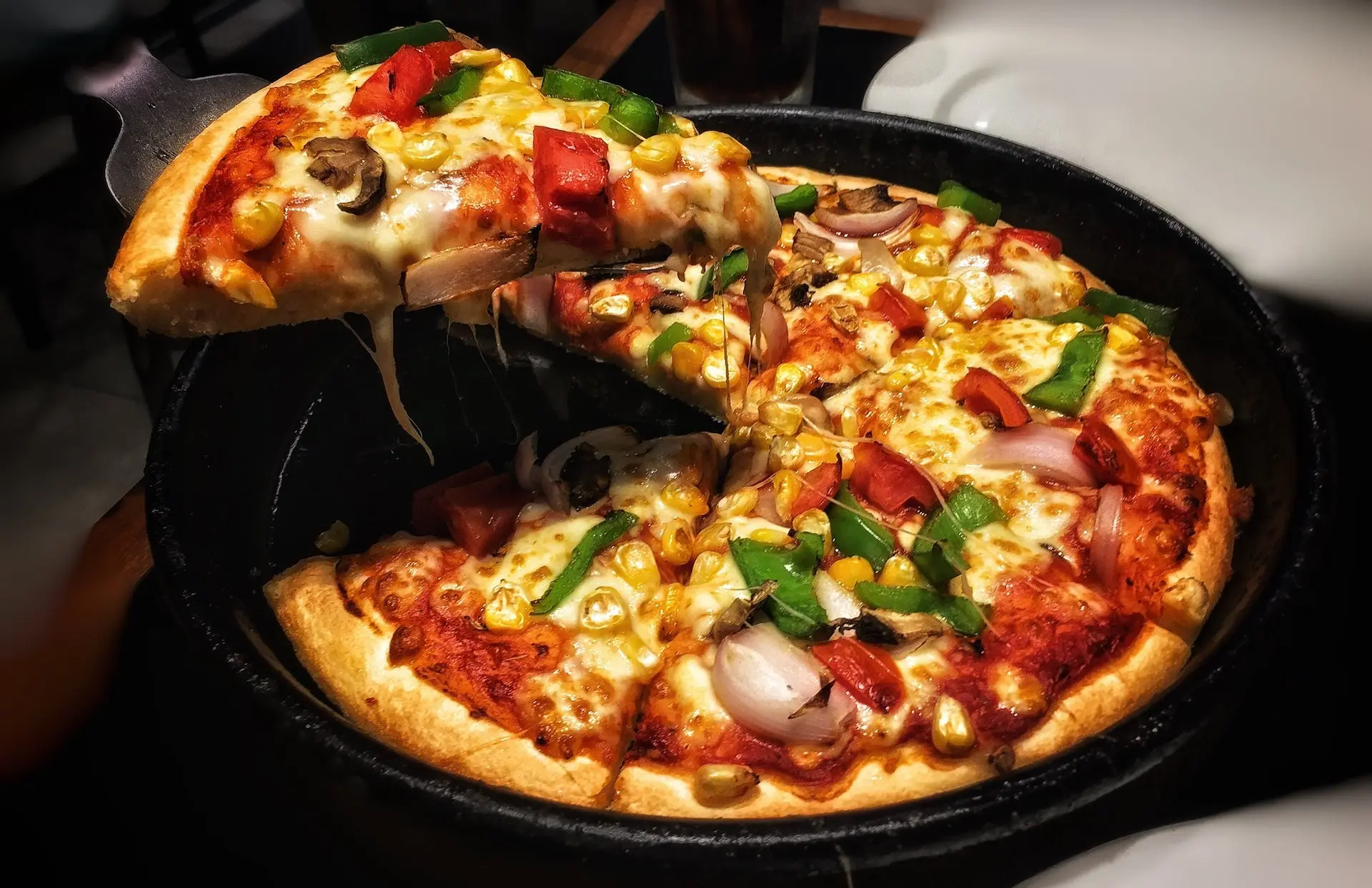How to cook Pizza in a frying pan
Updated:

For me, I feel like Jamie Oliver invented this one after I remember one of his videos going viral showing him cooking at Pizza in a frying pan. In reality, this is likely a variation on a Chicago style deep-pan pizza.
Thinking on, this method of cooking pizza ultimately makes sense, especially when we look at the abundance of pizza stones and pizza steels that you can buy.
They all do the same thing really, apply a high level of heat to start cooking your pizza base instantly.
Types of Frying pan
First off let's look into some of the different types of pans and how they work.
Stainless steel
These frying pans are usually on the cheaper side of the scale.
Stainless steel on its own isn't one of the best heat conductors. To help combat this, you can delve deeper into what the other materials make the pan. You may find some pans have a copper or aluminium, both of these will allow the pan to heat up quickly and will also offer a more even heat distribution for the pan.
Non-Stick
A non-stick pan is coated in either Teflon or ceramic. This coating creates a barrier between what you're trying to cook and the pan, which helps it to not stick to the pan.
The main downside to the non-stick pan is that they are not safe to put in the oven. Because of this, we'd recommend not using your best non-stick pans for the frying pan pizza technique that we'll outline in this guide.
Cast Iron
This is the heavyweight tier of frying pans; it's literally the heaviest too. Cast iron pans are also built to last. With a cast iron pan they don't heat as evenly as a non-stick or a stainless frying pan but where they stand out is in how well they keep their heat which is why the cast iron pan is the ideal pan for a Pizza made in a frying pan.
Cooking a pizza in a frying pan
Firstly ensure your frying pan is oven safe. If it has plastic handles, you might need to double-check with the manufacturer's guidelines if that plastic can survive in an over. If you're going down the cast-iron frying pan route then will likely have a handle that is also cast iron as most cast iron cookware is one solid piece of cast iron.
The process for creating a pizza in a frying pan is simple.
- Create your dough, as usual, using your favourite dough recipe.
- Preheat your grill on the highest setting and make sure you have a shelf in around the top half of the oven. At the same time put your frying pan on the hob and begin heating this as hot as you can get it.
- Stretch your dough out to a size that is large enough to fit in your pan. Smaller is ok; larger will not fit in your pan.
- You now need to transfer the dough to your pan. Your pan will be super hot, so make sure you don't burn yourself.
- You can now start loading your pizza by adding in your tomato base and your pizza toppings.
- After 4 minutes, your base should be browning well underneath; if yours is not, then you can give it another minute until it starts to crisp up.
- Once you have a brown base, you need to transfer the pan under your grill for the final bit of cooking. Remember to use an oven glove here as there is a good chance your hangle will be You should be aiming for about 2 minutes here as we're straight in a grill it's best to keep an eye on the pizza to make sure nothing burns from being too close to the elements.
- When the pizza toppings are cooked to your liking, bring the pan out of the oven and serve and enjoy.
